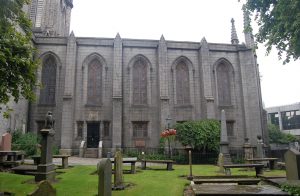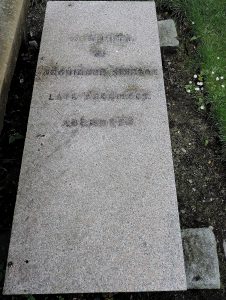Archibald Simpson was born on 4th May 1790, his parents’ ninth child, in a house on Guestrow, Aberdeen. Much of Guestrow was demolished during the slum clearance, but a plaque is in place on what remains of the road (parallel to Broad Street across from the Town House extension). At Aberdeen Grammar School Archibald Simpson was a contemporary of the poet Byron. At the age of 13 he went to Marischal College but had to leave a year later when his father died. At the age of 20 he went to London as an apprentice architect, later spending some time in Italy before returning to Aberdeen in 1813 where he opened his architectural practice in his old home in Guestrow. He moved the practice a number of times, to Union Street (where a fire destroyed all his drawings), Belmont Street and finally to Bon Accord Street. There are, or were, because some have been lost, many important buildings designed by Archibald Simpson in the city. The Assembly Rooms, now the Music Hall, is one of his prominent buildings, currently undergoing restoration. Others include The Old Royal Infirmary, St Andrew’s Cathedral, the Triple Kirks and the Athaneum.

Simpson also designed the East Kirk of St Nicholas in 1835. Following the demolition of the previous East Kirk, the new building was built and then dedicated in 1837. It is worth noting that John Smith, as city architect, disapproved of the design. The first photograph shows the building as it now appears, which is more or less unaltered from his day.

Archibald Simpson died when only 56 years old. He had been away on business to Edinburgh and then Derby. On his return he was showing signs of developing a fever. Over the next few days at his home at 1 East Craibstone Street, he rapidly deteriorated and died on 23rd March 1847 just one week after his return. He had been a bachelor, played the violin and was variously described as ‘a little, active man, always carrying plans under his arms’, ‘shy and retiring’ and having ‘a strong and eccentric character’.
As befits a man of granite, his grave in the Kirkyard at the Kirk of St Nicholas, is marked by a simple granite slab at ground level, close to the East Kirk building, as shown in the second photograph.